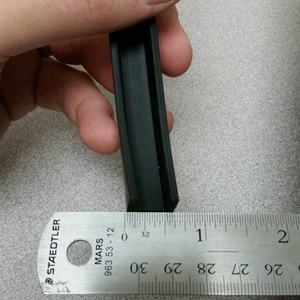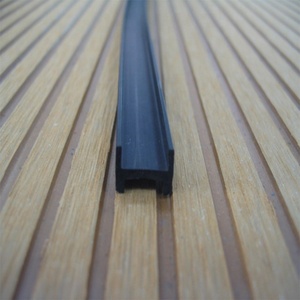
All categories
Featured selections
Trade Assurance
Buyer Central
Help Center
Get the app
Become a supplier

(3134 products available)














































Automotive seals and gaskets are available in several types. The differences are based on the materials used to make them and their primary functions.
Here are the most common waterproof trims:
Sponge rubber trims
This trim type is made of cellular (sponge) rubber and is the most commonly used seal in cars. The spongy nature of this seal makes it ideal for blocking both liquids and air.
Solid rubber trim
Solid rubber trim is made from non-cellular compounds. Such a trim is widely used in applications where oil and grease resistance is crucial. These compounds are also resistant to high and low temperatures.
Channel trim
This is a specialized trim used to install glass and other panels mechanically. The trim typically consists of a rubber extrusion with a central groove (channel) running along the length of the trim.
Bubble trim
It consists of an extrusion with a bubble or rise in the center of the trim that offers additional cushioning. This trim is used in vehicles where extra vibration and shock absorption are needed.
Rectangular trim
This trim is designed for use in applications where sealing against potential leaks is essential. Such applications include hoods, bonnets, and trunk lids, where a tight compression seal is necessary.
Co-extruded trims
They are manufactured from two or more materials using a single production process. This makes them ideal for automotive applications where different properties are needed. For instance, one material can provide tensile strength while the other offers resistance to extreme temperatures.
Specialized extrusions
They are produced to meet specific OEM customer requirements. These trims can include features such as molded corners or cutouts.
A car seal serves several purposes in a vehicle. It provides a shield between the outside and internal environment of the vehicle.
Here are some key features waterproof trims provide:
Prevention of moisture infiltration
The most notable feature of door seals is that they prevent moisture from entering the vehicle, even during heavy downpours. This is particularly crucial for the interior since moisture can cause significant damage.
Prevention of dust and road noise
Besides water, seals also prevent the ingress of dust and debris that can affect car components over time. They also help reduce road noise significantly.
Compensation for panel misalignment
Misalignment may happen during the manufacturing process or after years of use. Either way, it is unlikely to create an effective barrier against environmental elements. Luckily, door seals compress to allow for small variations in alignment.
Improvement of passenger comfort
A good seal will keep the internal environment of a car isolated from what is happening outside. Thus, it significantly contributes to the comfort of passengers and drivers alike.
Reduction of energy consumption
Vehicle energy waste emanates from ineffective car seals. They allow external conditions to affect the car's internal temperature. Consequently, the heating or cooling system must constantly work to maintain comfort levels. On the other hand, good-quality seals are able to minimize energy loss.
Vibration absorption and dampening
They are installed to eliminate vibrations generated by the engine and the car's motion. Reducing these vibrations helps enhance the comfort of passengers in the vehicle.
Better aesthetic appeal
Automotive seals are generally installed around the vehicle's doors, windows, and trunk. They are placed in areas that are prominent in terms of visibility. Thus, good-quality seals not only help with functionalities but also with aesthetics.
Here are some key considerations for automotive trim sealing:
Material compatibility
Automotive trim sealing needs to consider the specific materials where the trim will be installed. For instance, rubber trims can be installed in metal surfaces. This is due to their excellent adhesion properties and flexibility.
The adhesion properties also extend to painted and plastic surfaces, making rubber trims ideal for various surfaces. Meanwhile,为 vinyl car door trim is better compatible with metal surfaces. This is due to their rigidity, which provides a solid, durable sealing surface.Weather resistance
Many automotive trims are exposed to harsh weather and environments. These include outer space, under-carriage, and engine bay applications. Regardless, they should be able to withstand adverse effects from sun, rain, snow, and temperature variations. For instance, silicone sealants generally withstand extreme temperatures well.
Vibration absorption
There are several components in a car that naturally vibrate. These include the engine, tires, and even the road. The vibrations limit the car's comfort to both the driver and passengers. Good-quality water trims effectively absorb these vibrations and minimize their transmission into the car.
Ease of installation
Installation ease is typically defined by how intuitive the sealing system's design is and by the presence of detailed guidelines. Self-adhesive trims tend to be the easiest to install. This is particularly when compared to sealing systems that need special fastening solutions.
Cost considerations
Typically, price is directly proportional to quality. Therefore, getting the ideal quality may require a significant investment. Take the lexus door trim for example. Though pricey, it's an ideal investment for additional comfort and aesthetic value.
Maintenance and longevity
Trim seals are typically subjected to constant mechanical stress. This takes a toll on their lifespan. Some trims are engineered to be more rugged. They can easily resist wear and tear from constant opening and closing of vehicle doors, windows, and hoods.
The application and maintenance of automotive trim sealing usually depend on the trim type. In this case, they're primarily concerned with rubber trims.
Clean the application surface
It's recommended to clean the surface where the trim will be applied before installation. Use a suitable cleaning agent and a soft cloth to remove dirt, grime, and any old sealant remnants from the surface.
Dry the surface
The surface needs to be dry before applying the trim. This helps the trim adhesive bond properly with the surface. For optimal results, ensure the surface is completely dry before proceeding with installation.
Choose the right trim
There are several universal car door trims available. They all come with distinct sizes and lengths. So, select a trim that suits the cleaning space. Moreover, ensure it's made of materials that will withstand varying weather conditions.
Measure and cut the trim
Use a measuring tape to measure the space within the trim's parameters. Then use a sharp utility knife to cut the trim to the required length. For clean cuts and safe handling, make sure the trim is firmly secured while cutting.
Apply the trim
Self-adhesive trims only need to be peeled off the backing paper. After that, the trimmed can be pressed onto the prepared surface. On the other hand, rubber trims need to be applied polyurethane adhesive onto the cleaned surface. Afterward, press the trim firmly onto both the surface and the trim's embedded channel to secure it properly.
Use a lubricant to optimize sealant performance
Applying a thin layer of lubricant on the trim can boost its performance. Ideally, go for a lubricant that is safe for rubber. Silicone-based lubricants are commonly recommended.
Proper tools for maintenance
Using the right tools is essential for longevity, especially when working on the vehicle's door trim. Use a soft brush, sponge, or cloth. Ideally, go for a cloth to differentiate between solutions.
Trim care routines
The care routine depends on the environment where the trim is situated. For example, trims in outerspace need frequent inspection and washing to eliminate accumulated grime and debris. Such debris will often contain moisture, which over time degrades the trim. Conversely, trims in semi-closed spaces don't require as much maintenance, but regular inspections should not be overlooked.
A1. Rubber trims can be made of several types of rubber, with each having its unique properties. However, cellular rubber is the most ideal for sealing. Commonly, it is referred to as sponge rubber. It has a porous structure that offers excellent compression, making it effective at creating tight seals. This is what makes it indispensable in automotive applications like doors, windows, and trunks.
A2. Seals and gaskets can last anywhere between 10 to 15 years. Meanwhile, some may even last longer. A seal's lifespan commonly varies by the environmental elements it's exposed to. Common sealants include silicon, natural rubber, vinyl, and foam. Each of them has distinct weather-resistance properties. For instance, silicon lasts longer than all of them because it is impervious to rain, snow, and UV rays.
A3. Many materials that are used to construct door seals are prone to deteriorating over time from harsh chemicals. They include oil, grease, harsh detergents, and petroleum-based products. Besides, exposure to extreme temperatures, both hot and cold, may harden or crack seals. So too will moisture and debris from the environment if it is not cleaned effectively.
A4. One of the most obvious signs it's time to replace one of the car seals is noisiness. If the car's interior is nosier than usual when driving, it could be as a result of damaged or worn-out seals. Noticing drafts or the presence of water within the car's interior space is another telltale sign. Furthermore, inspect for visible damages such as cracks, tears, or signs of wear, and check for mold and mildew.